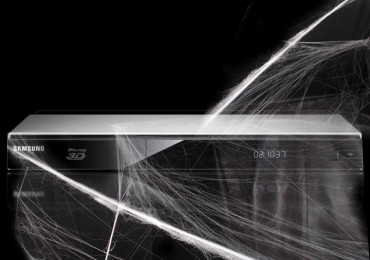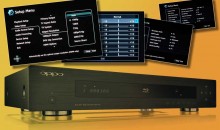Upgrading a Blu-ray Player That’s Outdated
A lot of people ran out and purchased Blu-ray when it first came out. Those people paved the way for the inexpensive players we have today. When people buy the first-edition models of any new electronic gadget, they cover and recoup some of the R&D costs that make those products possible. In a sense, they “take one for the team.” While I’d like to think that buying a Blu-ray player once is plenty, the truth is, your old player might be a tad outdated, and newer BD players actually offer a lot more features. Whether or not you benefit from those new features remains to be seen. We decided to write another quick guide to tell you whether or not to upgrade, but from the perspective of those of us who’ve been into Blu-ray for quite some time. Of course, if your player got struck by lightning, the decision’s been made for you—but this guide addresses whether or not you need a new player to upgrade and replace one that may or may not actually still work.
Do You Have Ethernet (RJ45) Connectivity on Your Player?
Believe it or not, some of the earliest Blu-ray players didn’t have Internet connectivity. If that’s your player then you’ve probably noticed you’ve been having some difficulty playing back newer Blu-ray discs. That’s because the copy protection and digital rights management systems Blu-ray uses requires periodic updates to the firmware of the player (there have been over 40 updates to-date). This firmware can be updated via files burned to a disc, or via an Internet download. Some manufacturers were trying to get their players to market quickly (and keep costs as low as possible) and so they forsook the network functionality of these early players to get them into the hands of consumers. Perhaps they thought the Blu-ray Disc Association wouldn’t actually issue too many updates. Years later, we’re finding this to be a major problem for owners of older players—particularly the models that are no longer supported by the manufacturer. (Yes, we mean you, Magnavox!) If you have one of these older players, you really want to upgrade to…just about any BD player will be better. In general, there are lot of companies who simply stop updating their players after three or more years. This renders them unable to play many of the latest Blu-ray discs. It’s a controversial issue and one that continues to be a hot topic.
[top-seller category_id=’23’ product_count=’4′ title=’Top Sellers’]
Do You Want to Add Streaming Media Services?
While you can buy a $100 Roku box to add a host of streaming media services to your living room, you may want to update your Blu-ray player to a new model and wrap all those features into the cost of the upgrade. Since many players are available for $250 or less, that’s like a $100 discount. Plus, the component quality of most streaming media devices is extremely low—meaning you’re getting the cheapest video processing possible so they can wrap everything into a box about the size of your average tape measure.
Are You Upgrading a Blu-ray Player for Quality?
While I’d argue that ALL Blu-ray players look better than the same movie on DVD, I don’t think that all Blu-ray players look the same. Different players have different video processing capabilities and some leaders have emerged in recent years to take the crown for best video and audio processing. If you think they are all the same just because they all share the same sort of HDMI output—you’d be flat wrong. It’s the video processing chip (and it’s proper use and configuration) that determines the final level of quality. Products like Oppo, which seem expensive at $499 and up, now eclipse “flagship” products from other manufacturers that used to cost as much as $1,000 or more. It’s amazing what upgrading a Blu-ray player to a great flagship-level product can do to a movie and it’s something to consider if you’re making upgrades to the rest of your system.
Upgrading and Updating the Player
The physical act of upgrading a Blu-ray player that’s outdated isn’t difficult at all. All of the connections are the same, unless you are upgrading from component video to HDMI, or changing from using the multi-channel analogue outputs to sending your audio on that same HDMI cable. You can always check out our article on Setting Up a Blu-ray Disc Player for more tips on how to best integrate it. For the most part, however, the upgrade should be fairly tame, and the biggest thing you may need to do is get Internet connectivity to your player. To do this you can either use the WiFi capabilities found in many players today, or get Internet connectivity to your player using an RJ45 (Ethernet) cable. That can come from a nearby router, hub or switch—or you can use Ethernet-over-power line technology to make this a reality. Ethernet-over-power line lets you set up a network using the standard outlets in your home. It’s pretty ingenious and not terribly expensive to implement. If you don’t want to run a line from your modem or router to get Internet to your new player (and you don’t have a built-in WiFi receiver in your Blu-ray device), this is the method we recommend.
Conclusion
There are a lot of reasons to buy a Blu-ray player, and certain some specific reasons to upgrade your existing one. When it comes down to it, however, you may just want to up the quality and step into a newer model. After all, that 10 year-old vehicle will still get you around the block, but the newest model does really have an appeal, doesn’t it?







Makes me feel good that I decided to go with a PS3 instead.
And they are still getting update’s for the Blu-ray movie part like the most recent PS3 update.